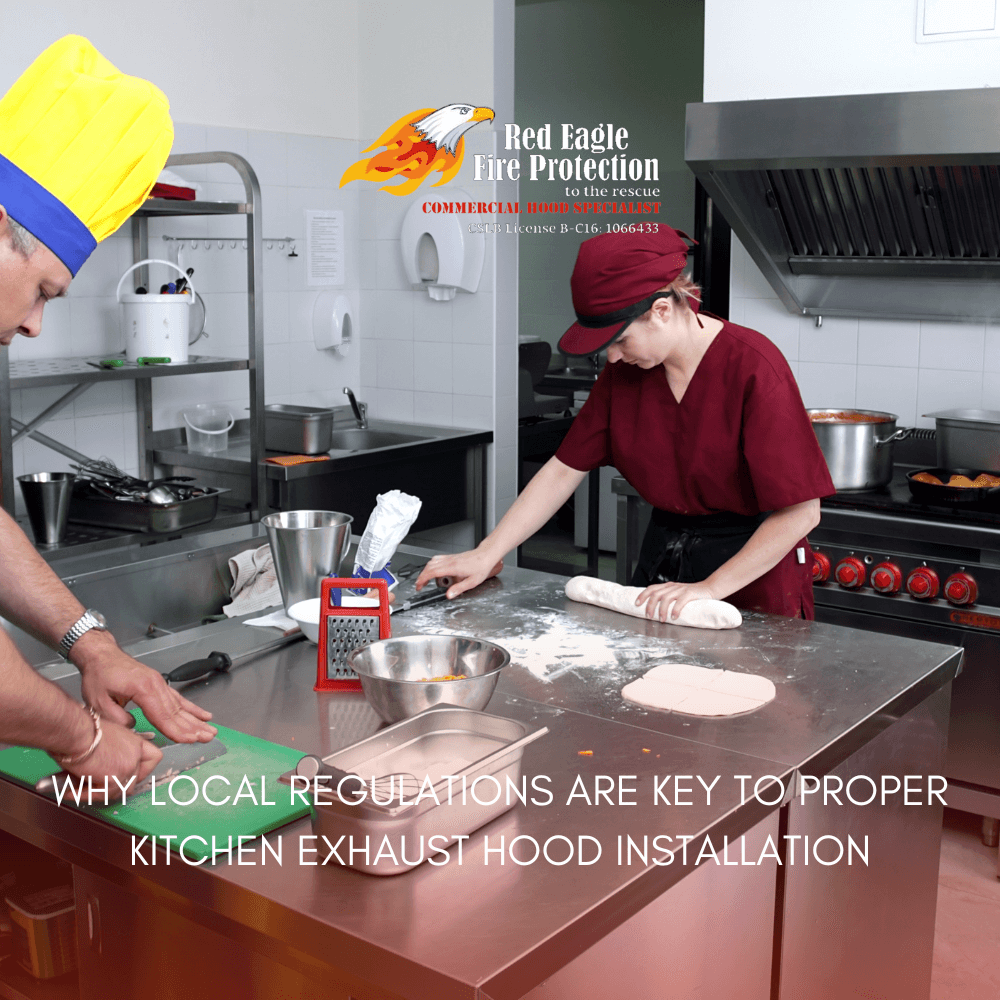Installing a kitchen exhaust hood is essential for maintaining safety and air quality in commercial kitchens. However, it’s not just about choosing the right equipment—local regulations play a crucial role in ensuring a safe and compliant kitchen exhaust hood installation. Adhering to local codes helps prevent fire hazards, ensures proper ventilation, and protects your business from legal issues. In this article, we’ll explore why local regulations are key to a successful installation.
1. Ensuring Fire Safety Compliance
One of the main reasons for following local regulations during kitchen exhaust hood installation is to ensure fire safety. Commercial kitchens produce large amounts of grease-laden vapors, which can ignite if not properly ventilated. Local fire codes specify guidelines for the placement and design of exhaust hoods to minimize these risks.
Fire Suppression System Requirements
Many local codes require the integration of a fire suppression system with your exhaust hood. This system automatically activates in the event of a grease fire, extinguishing it before it spreads. During installation, it’s essential to follow local regulations to ensure that the fire suppression system is correctly installed and compliant with fire safety standards.
2. Proper Ventilation for Health and Safety
Another critical aspect of local regulations is ensuring proper ventilation. Without adequate ventilation, kitchens can become overheated, and harmful fumes can accumulate, posing health risks to staff. Local codes dictate the minimum requirements for airflow, exhaust hood placement, and ductwork design to ensure that the kitchen remains safe and comfortable.
Ventilation Capacity Requirements
Local regulations often specify the required cubic feet per minute (CFM) for exhaust hoods based on the type of cooking equipment used. For example, high-heat appliances like fryers and grills may require a higher CFM to remove heat and smoke efficiently. Ensuring that your kitchen exhaust hood installation meets these capacity requirements is essential for maintaining air quality and safety.
3. Ductwork and Exhaust Design Standards
Local regulations also cover the design and installation of ductwork. The ducts used in your kitchen exhaust hood installation must be made from specific materials and routed in a way that prevents grease buildup and blockages. Poorly designed ductwork can reduce airflow and increase the risk of fire, which is why adhering to local codes is crucial.
Material and Sizing Requirements
Ducts must be constructed from fire-resistant materials, and their size should match the capacity of the exhaust hood. Local codes may also specify how ducts are routed, ensuring that sharp bends and long distances, which can restrict airflow, are avoided. Properly designed and installed ductwork ensures that your exhaust system operates safely and efficiently.
4. Legal Compliance and Avoiding Penalties
Failing to comply with local regulations during kitchen exhaust hood installation can lead to legal issues, fines, or even business closures. Health and fire inspections are common in commercial kitchens, and non-compliance with ventilation and fire safety standards can result in penalties. Ensuring that your installation meets local codes protects your business from these risks.
Maintaining Business Operations
By following local regulations, you can avoid costly shutdowns or delays in opening your kitchen. Compliance with these standards ensures that your kitchen operates smoothly and that inspections are passed without issues. This allows you to focus on running your business rather than dealing with legal challenges.
Conclusion
Adhering to local regulations is essential for proper kitchen exhaust hood installation. From ensuring fire safety and proper ventilation to meeting ductwork standards and avoiding legal penalties, following these codes is critical for maintaining a safe and compliant kitchen. Investing in a professional installation that meets local requirements not only protects your kitchen but also ensures the long-term success of your business.
READ MORE:
Ensuring Compliance with Local Codes During Kitchen Exhaust Hood Installation
How to Assess Space Requirements Before Installing a Kitchen Exhaust Hood

